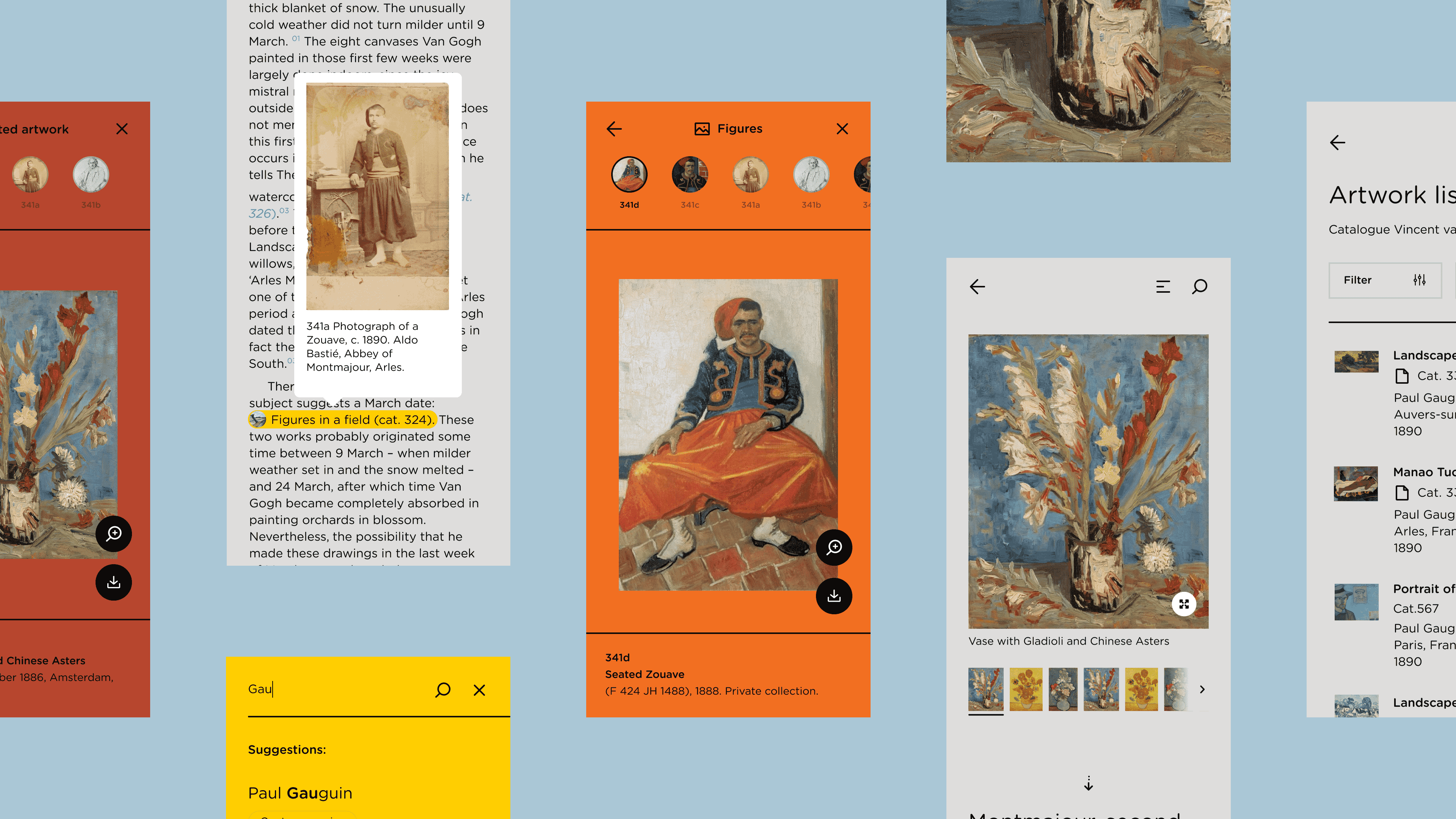
A longstanding partnership thrives between the Van Gogh Museum and DEPT®. We have crafted their visual identity, the Unravel Van Gogh Mobile app, and their current museum website together with Q42. Now, we proudly introduce our latest collaboration: the digital Van Gogh Collection catalog.
Collection catalogs are extensive works used by art historians and researchers, housing intricate details about a museum’s (sub)collection. With the digital Van Gogh Museum collection catalogs, researchers can now explore the intricacies of Van Gogh’s works and his contemporaries in a way that transcends the boundaries of a traditional book.
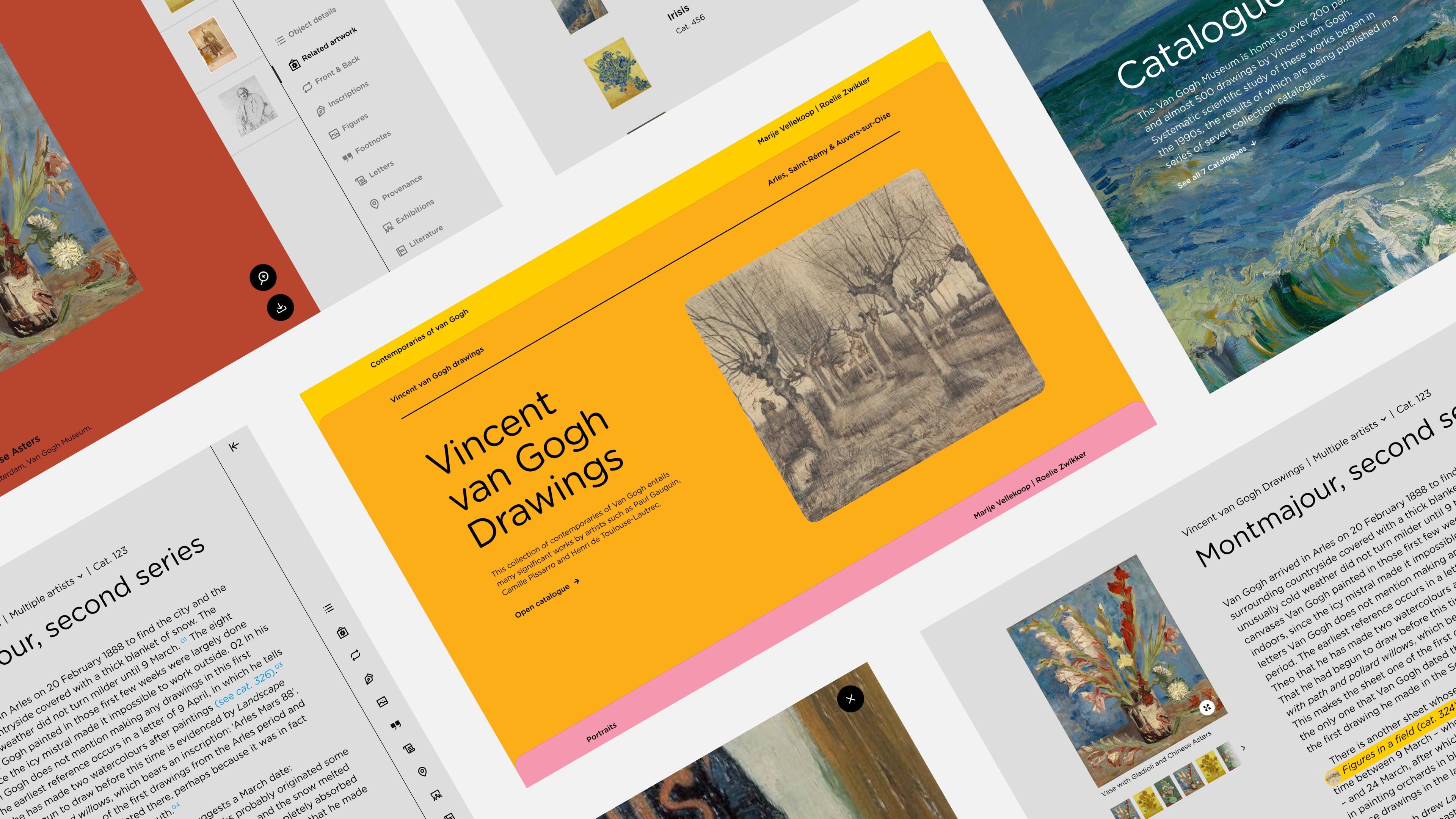
A digital evolution
Years of meticulous research on 200 paintings and nearly 500 drawings by Vincent van Gogh have resulted in seven catalogs, with six already published and the final one in progress. The collaborative efforts of museum researchers, restorers, and the Cultural Heritage Agency of the Ministry of Education, Culture and Science have been instrumental in this scientific exploration. Furthermore, the museum also published two catalogues about Van Gogh’s contemporaries, one of which online at the new platform.
Because creating these catalogs is an immense effort, it was crucial to preserve the logic of the physical books while designing the digital format. The digitization process provided an opportunity to enhance the overall interaction and accessibility of metadata, while still honoring the flow and structure of the original publications. With the integration of Micrio, the gigapixel technology created by Q42, the digital experience now offers a more captivating and immersive encounter with the artwork.
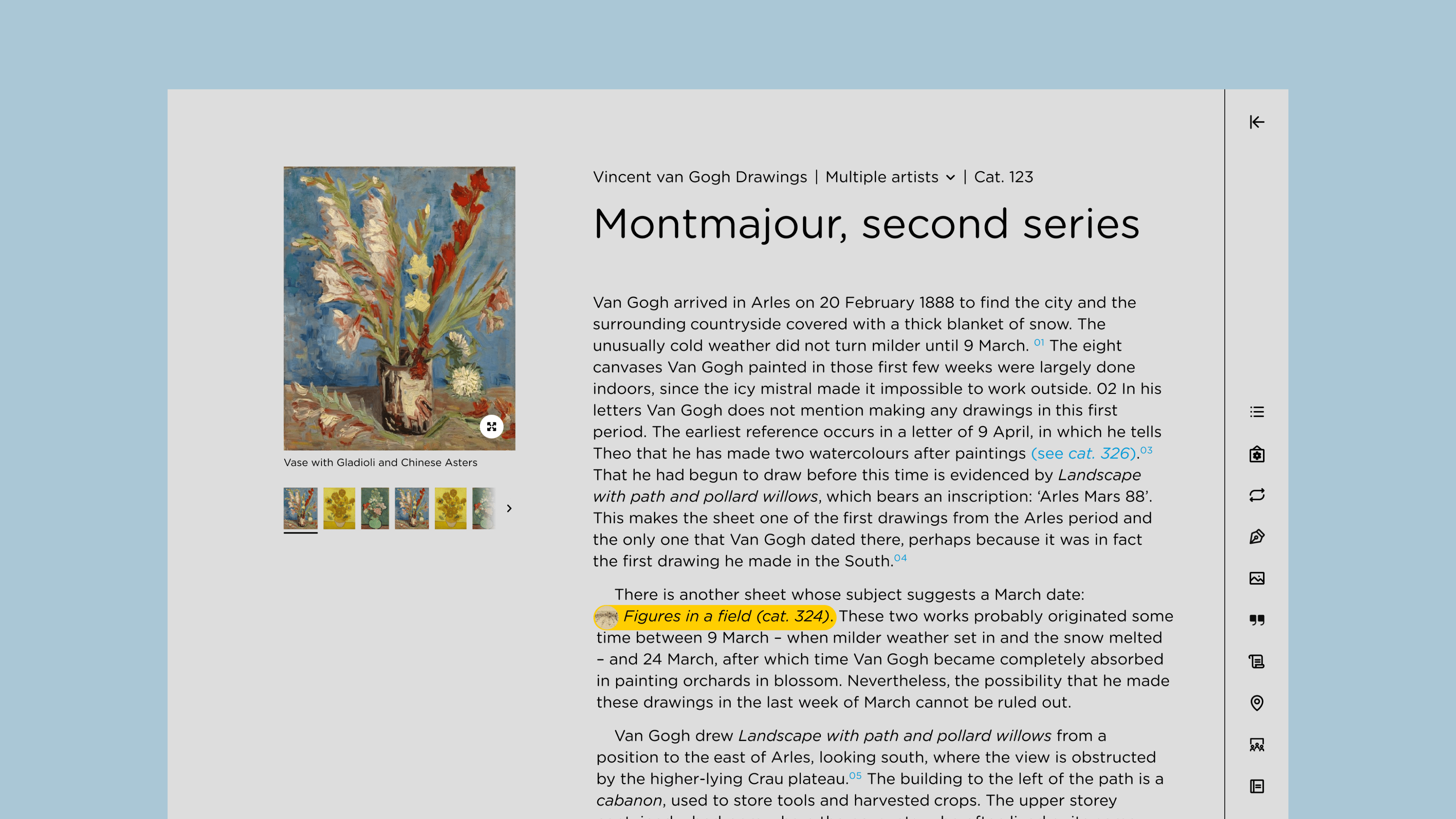
Reshaping the way researchers engage with art
Collection catalogs are a treasure trove of diverse information, including images, object details, provenance, and footnotes.
However, abundant information types can divert the readers’ attention from the core text. To tackle this challenge, we created a Reader Mode that preserves the essence of the text while leveraging the power of digital technology.
Our approach includes several intuitive features aimed at optimizing the reading experience and ensuring relevant information is always accessible. A sticky image ensures the image remains fixed allowing readers to engage effortlessly. Tooltips for footnotes and supportive images help to keep focus on the core text, ensuring readers enjoy a clean experience. A clever search feature allows users to search entries in multiple catalogs simultaneously, in the future
Additionally, and most importantly, we have introduced a side panel on the right side, housing additional information related to each entry. In contrast to the need to navigate back and forth across pages in a physical book, the side panel empowers readers to access all information with a single click.
The transition from a traditional book format to a digital interface challenged us to reimagine the collection catalog experience, enabling researchers to dive into the richness of information while maintaining an optimal reading flow.
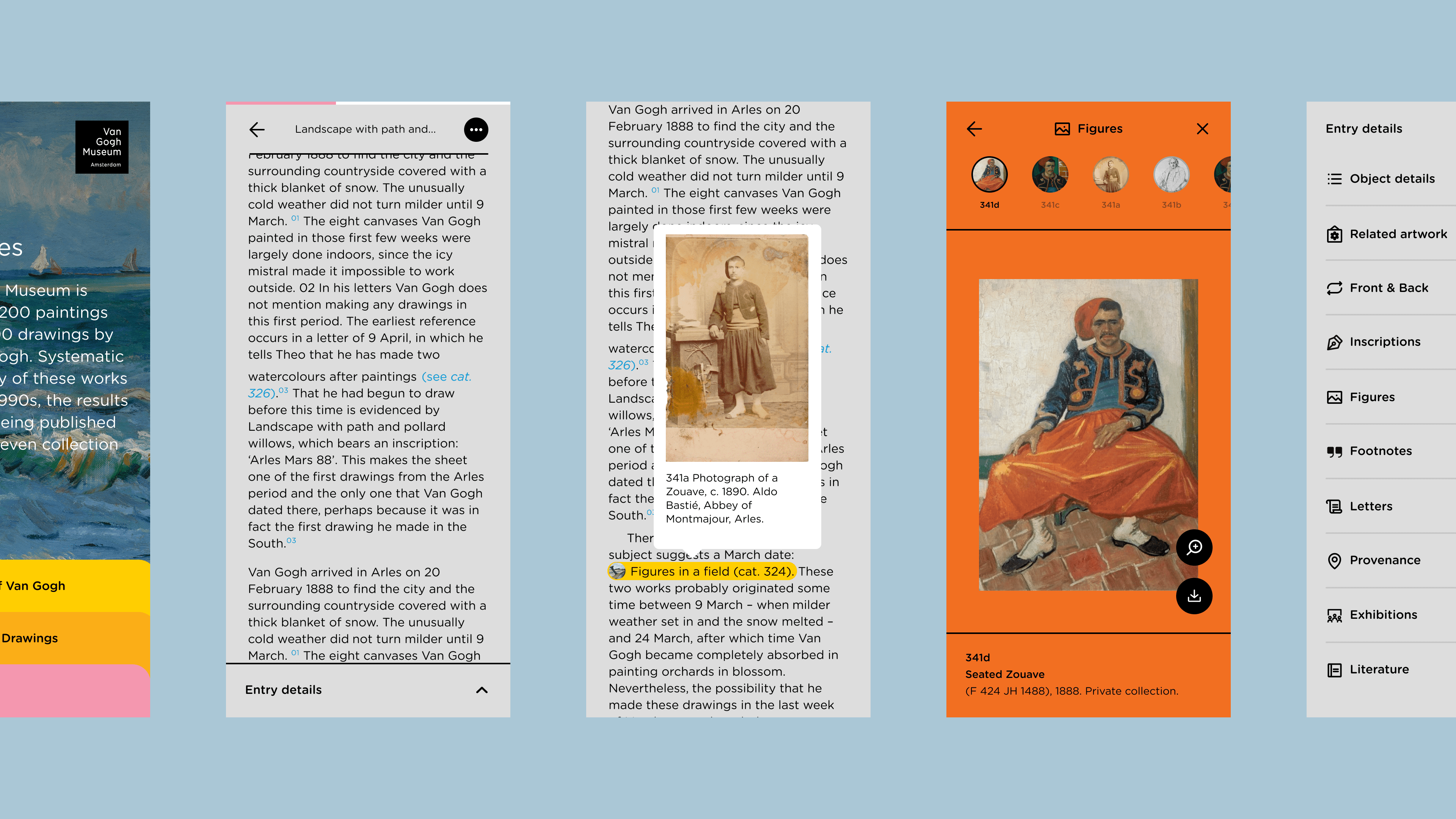
Elevating the user experience through testing
Through rigorous testing with our target audience, we have revolutionized the way researchers engage with art at the Van Gogh Museum. This process not only allowed us to refine the experience but also shed light on unforeseen challenges we addressed with care. Most importantly, it illuminated the joy and appreciation our target audience experienced, underscoring the value of the enhanced features made possible by this digital evolution.
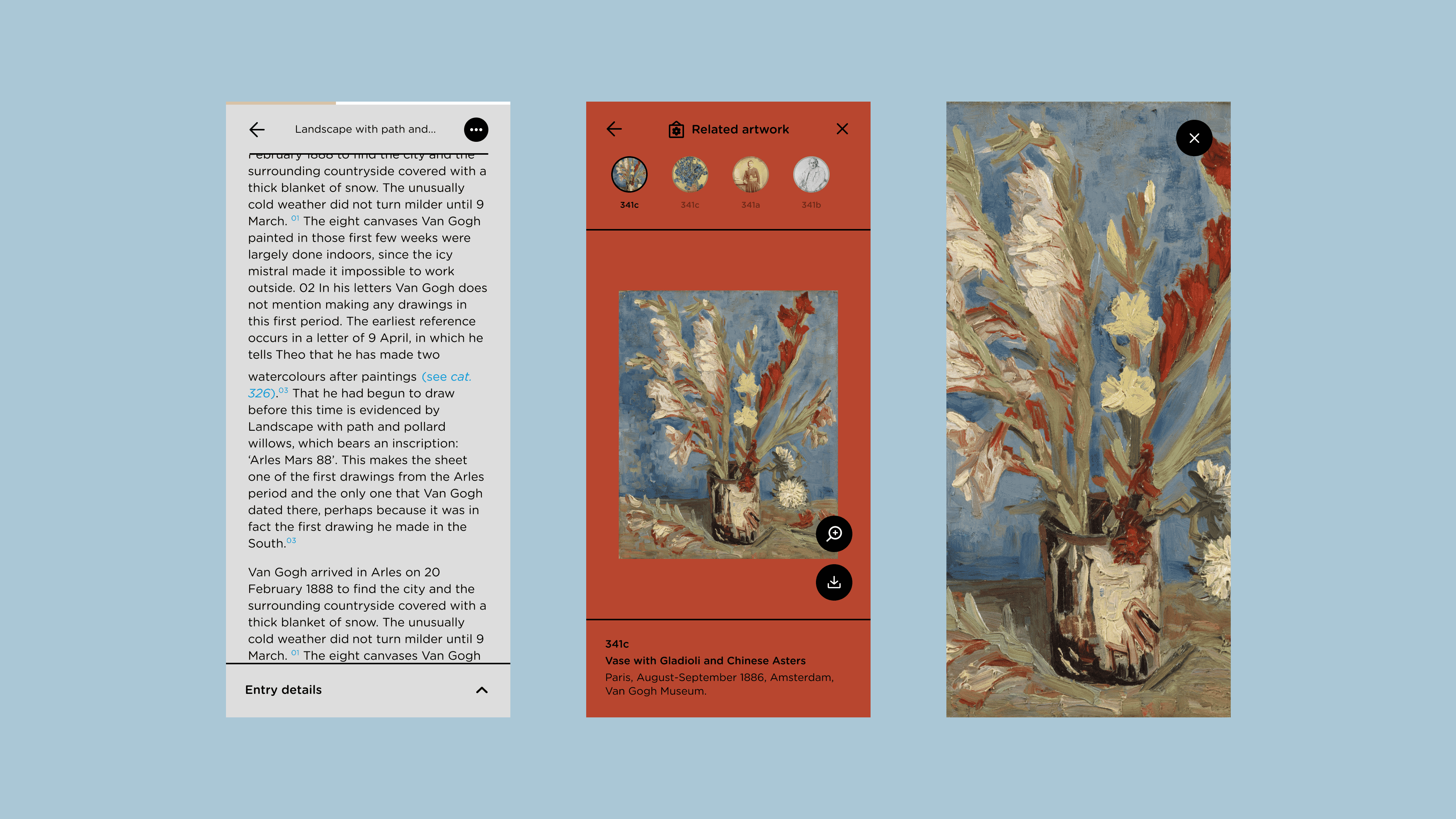
A leading experience within the field
The website is not only visually appealing but also scalable, empowering the Van Gogh Museum to ensure precise translation of every detail and preserving the researchers’ work as intended.
With this project, the museum sets a new standard for the cultural sector, harmonizing the richness of a printed catalog with the potential and interactivity of a digital experience, ultimately reshaping the way researchers engage with art.
Questions?
UX Design & Research Lead
Franklin Schamhart
Discover more


